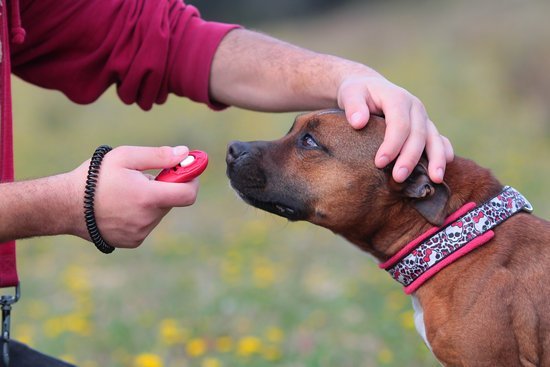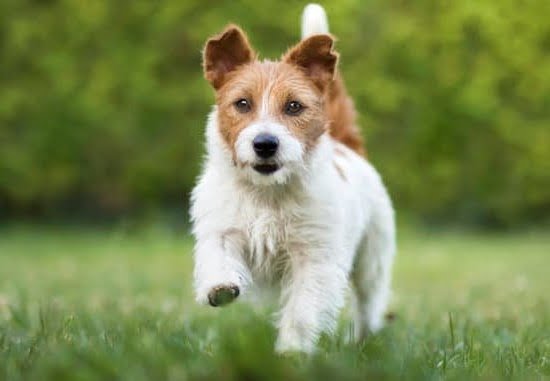Gun dogs play a crucial role in hunting and retrieving game for hunters. Understanding the purpose of gun dogs is essential in training them to perform at their best. In this article, we’ll explore the various aspects of training gun dogs, from selecting the right breed to addressing common behavioral issues, and maintaining consistency in their training.
Selecting the Right Breed for Gun Dog Training is a vital aspect that will determine the success of your training efforts. Different breeds have different strengths and weaknesses when it comes to hunting and retrieving, so choosing the right breed that aligns with your hunting preferences is important.
Building a Strong Bond with Your Gun Dog is crucial for effective communication and cooperation during training. Establishing trust and respect between you and your gun dog will lay the foundation for successful training. Through basic obedience training, advanced techniques, introducing scent work, and addressing behavioral issues, we’ll delve into the intricacies of how to train gun dogs effectively.
Selecting the Right Breed for Gun Dog Training
The right breed is crucial for successful gun dog training, as each breed has its own distinct characteristics and strengths. When selecting a breed for gun dog training, it’s important to consider the purpose of the training and the specific skills needed for hunting situations.
One of the most popular breeds for gun dog training is the Labrador Retriever. Known for their intelligence, trainability, and friendly disposition, Labs excel in retrieving and are often used as waterfowl retrievers. On the other hand, pointers such as the English Setter or German Shorthaired Pointer are prized for their keen sense of smell and ability to locate game birds with precision.
When choosing a breed for gun dog training, it’s essential to research and understand their natural abilities and tendencies. For example, Spaniels are known for flushing out game birds from cover, while Setters have a strong pointing instinct. Understanding these breed-specific behaviors will help in selecting a breed that aligns with your hunting style and preferences.
It’s also important to consider the energy levels and exercise needs of different breeds. While some breeds thrive on high-intensity activities and require plenty of physical exercise, others may have a more laid-back nature. Matching the energy level of the breed with your own lifestyle will contribute to a successful gun dog training experience.
| Breed | Main Characteristics |
|---|---|
| Labrador Retriever | Intelligent, friendly, excellent retriever |
| Pointers (English Setter/German Shorthaired Pointer) | Keen sense of smell, ability to locate game birds with precision |
| Spaniels | Flushing out game birds from cover |
Building a Strong Bond With Your Gun Dog
When it comes to training gun dogs, building a strong bond with your canine companion is crucial. A strong bond between you and your gun dog will not only lead to successful training but also enhance the overall hunting experience. Here are some essential tips for strengthening the bond with your gun dog:
1. Spend quality time together: Dedicate regular one-on-one time with your gun dog, whether it’s through playtime, walks, or training sessions. This will help establish trust and create a deeper connection between you and your dog.
2. Communication is key: Understand and respond to the body language of your gun dog. Successful communication builds mutual understanding and strengthens the bond between you and your dog.
3. Positive reinforcement: Use positive reinforcement techniques such as praise, treats, and toys to reward good behavior during training. This will not only motivate your gun dog but also reinforce the bond between you and your pet.
4. Mutual respect: Treat your gun dog with respect and kindness. Establishing mutual respect forms the foundation for a strong bond between you and your pet.
By following these tips, you can nurture a strong bond with your gun dog, which is essential for successful training and an enjoyable hunting experience.
Basic Obedience Training for Gun Dogs
When it comes to training gun dogs, basic obedience is the foundation for all further training. Whether you have a retriever, pointer, or spaniel, teaching your gun dog to obey basic commands is crucial for their safety and effectiveness in the field. Here are some key steps and techniques on how to train gun dogs in basic obedience:
1. Start with the basics: Begin by teaching your gun dog simple commands such as sit, stay, come, and heel. Use positive reinforcement such as treats, praise, and toys to motivate your dog to follow these commands consistently.
2. Establish boundaries: Setting clear boundaries is essential for training gun dogs. Teach your dog to understand where they are allowed to go and what behaviors are unacceptable. Consistency is key in reinforcing these boundaries.
3. Practice consistency: Repetition is vital when it comes to basic obedience training for gun dogs. Regular practice sessions will help reinforce the commands and ensure that your dog responds reliably in various situations.
Overall, basic obedience training lays the groundwork for more advanced gun dog training techniques such as retrieving and scent work. By building a strong foundation of obedience, you can ensure that your gun dog is well-prepared for hunting situations and will be a reliable companion in the field.
Advanced Gun Dog Training Techniques
Once your gun dog has mastered basic obedience and commands, it’s time to move on to more advanced training techniques. These techniques are essential for preparing your dog for hunting situations and further developing their skills as a gun dog. Advanced training will help your dog become more reliable in the field, making them an invaluable asset during hunts.
Marking and Memory Retrieving
One of the most important skills for a gun dog is the ability to mark and remember the location of fallen game birds. Advanced training in marking involves teaching your dog to pay attention to the location where the bird falls and remember its position until sent to retrieve it. This can be achieved through various drills and exercises that challenge your dog’s memory and ability to focus on distant objects.
Blind Retrieves
Blind retrieves are an essential skill for gun dogs, as they require the dog to retrieve a bird from a location they haven’t seen it fall. This advanced technique involves using whistle commands, hand signals, and other cues to direct the dog to the hidden bird. Training blind retrieves helps improve your dog’s problem-solving abilities and teaches them to trust your direction even when they can’t see the bird’s location.
Mental Stimulation Exercises
In addition to physical training, mental stimulation exercises are crucial for keeping gun dogs sharp and focused in the field. These exercises include scent discrimination tasks, memory games, and problem-solving challenges that keep your dog engaged and attentive. Mental stimulation is just as important as physical exercise for maintaining a well-rounded and capable gun dog.
By incorporating these advanced training techniques into your gun dog’s regimen, you’ll be preparing them for success in hunting situations while also fostering a stronger bond between you and your canine companion. With patience, consistency, and dedication, you’ll have a highly skilled gun dog that is ready for any hunting challenge.
Introducing Retrieving and Scent Work to Gun Dogs
When it comes to training gun dogs, introducing retrieving and scent work is a crucial aspect of their development. These activities are essential for preparing them for hunting situations and ensuring they can fulfill their purpose effectively. In this section, we will explore how to train gun dogs in retrieving and scent work, as well as the importance of these skills in their overall training.
Retrieving Training
Retrieving is a fundamental skill for gun dogs, as it allows them to retrieve game birds or other targets during a hunt. To train your gun dog in retrieving, start with basic fetch exercises using a dummy or a soft toy. Begin by encouraging your dog to pick up the object and bring it back to you.
Use positive reinforcement techniques such as treats and praise to reward your dog for successful retrieves. As your dog progresses, gradually increase the distance of the retrieves and introduce different terrain to mimic real hunting scenarios.
Scent Work Training
Scent work is another important aspect of gun dog training, as it teaches dogs to use their sense of smell to locate game birds or other targets. Start by introducing your dog to different scents using scent pads or containers with scented objects.
Encourage your dog to use their nose to find the source of the scent and reward them when they do so successfully. Gradually increase the complexity of the scent work by placing scented objects in various locations and terrains, simulating real hunting conditions.
Importance of Retrieving and Scent Work
Introducing retrieving and scent work to gun dogs is crucial for honing their natural instincts and abilities for hunting. These skills not only enhance their performance in the field but also provide mental stimulation and physical exercise, keeping them engaged and fulfilled. By incorporating retrieving and scent work training into your gun dog’s routine, you are setting them up for success in hunting situations while strengthening the bond between you and your loyal companion.
Training Gun Dogs for Hunting Situations
Once your gun dog has mastered basic obedience and advanced training techniques, it is time to focus on preparing them for hunting situations. Training gun dogs for hunting requires a combination of skills including retrieving, scent work, and the ability to follow commands in the field.
One important aspect of training gun dogs for hunting situations is introducing them to different environments and scenarios they may encounter while out in the field. This can include exposure to water for waterfowl hunting, wooded areas for upland bird hunting, and varying terrain for all types of hunting. Exposing your dog to these environments during training will help them feel comfortable and confident when it comes time to go on an actual hunt.
Another key factor in preparing gun dogs for hunting situations is teaching them how to work with other dogs and hunters. This includes following hand signals or whistle commands, staying steady when game is flushed, and retrieving downed game reliably. Consistent training and practice are essential in developing these skills and ensuring that your gun dog will perform well in a hunting setting.
Finally, training gun dogs for hunting situations also involves familiarizing them with the specific game they will be hunting. This can involve introducing them to the scents of different types of game, as well as providing opportunities for practice retrieves using decoys or scent trails. By incorporating these elements into their training regimen, you can help ensure that your gun dog is fully prepared to excel in a real-life hunting situation.
Addressing Common Behavioral Issues in Gun Dogs
Training gun dogs can be a challenging yet rewarding experience for both the dog and the owner. While these dogs are bred with natural instincts for hunting and retrieving, they may also exhibit common behavioral issues that can hinder their training progress. Understanding and addressing these issues is crucial to successfully training gun dogs.
One common behavioral issue in gun dogs is disobedience, which can manifest as refusal to follow commands or wandering off during training sessions. This can be addressed through consistent obedience training and positive reinforcement techniques. By establishing yourself as the pack leader and using rewards such as treats or praise, you can effectively communicate with your gun dog and reinforce desired behaviors.
Another common behavioral issue in gun dogs is aggression towards other animals or humans. This can be especially problematic during hunting situations, where the dog needs to remain focused and under control. Addressing this issue requires early socialization, proper training techniques, and identifying triggers for the aggression. Additionally, seeking professional help from a qualified trainer or behaviorist may be necessary to safely address this issue.
Separation anxiety is yet another common behavioral issue in gun dogs, which can result in destructive behavior when left alone. To address this issue, gradually desensitize the dog to being alone by starting with short periods of time and gradually increasing it over time. Providing toys or puzzle feeders can also help keep the dog distracted and prevent destructive behaviors. Patience and consistency are key when addressing separation anxiety in gun dogs.
Maintaining Training and Consistency With Gun Dogs
Consistency is key when it comes to training gun dogs. Once you have established the basic obedience training and advanced techniques with your gun dog, it is crucial to maintain consistency in their training routine. This means sticking to a regular schedule for exercises, practice drills, and hunting simulations. By maintaining consistency, you are reinforcing the behaviors and commands that you have worked on with your gun dog, allowing them to become more adept at their role.
In addition to consistency, it is important to regularly assess your gun dog’s progress and make adjustments as necessary. This could involve introducing new challenges or refining specific skills based on your gun dog’s performance. Regular evaluation of your gun dog’s abilities will help ensure that they are continuously improving and growing in their role as a skilled hunting companion.
Furthermore, maintaining a strong bond with your gun dog is essential for ongoing training and consistency. Spending quality time together outside of training sessions, engaging in playtime, walks, or other activities can strengthen the bond between you and your gun dog. This bond will create a mutual understanding and trust that can greatly improve their overall performance.
| Training | Consistency |
|---|---|
| Regular schedule for exercises | Maintain consistency in training routine |
| Assessing progress regularly | Introducing new challenges based on performance |
The Importance of Positive Reinforcement in Gun Dog Training
In conclusion, training gun dogs requires a significant amount of dedication, patience, and consistency. Understanding the purpose of gun dogs and selecting the right breed are crucial first steps in their training journey.
Building a strong bond with your gun dog is essential for effective training, as it will create trust and respect between you and your furry companion. Basic obedience training lays the foundation for more advanced techniques, such as introducing retrieving and scent work to gun dogs, as well as training them for hunting situations.
Advanced gun dog training techniques should be approached with care and expertise, ensuring that your dog is prepared for various scenarios they may encounter in the field. It is important to address any common behavioral issues that may arise during training, using positive reinforcement to encourage good behavior. Maintaining training and consistency over time is key to seeing long-term success in your gun dog’s abilities.
In summary, understanding how to train gun dogs involves a comprehensive approach that considers both their purpose and breed characteristics. With patience, dedication, and positive reinforcement, you can cultivate a strong working relationship with your gun dog and achieve successful outcomes in their training endeavors.
Frequently Asked Questions
What Is the Easiest Gun Dog to Train?
The easiest gun dog to train is often considered to be the Labrador Retriever. Their intelligence, eagerness to please, and strong retrieving instinct make them quick learners when it comes to gun dog training.
When Should I Start Training My Gun Dog?
It’s best to start training your gun dog as early as possible, ideally around 8-12 weeks of age. This is the critical socialization period for puppies, and it’s important to begin introducing them to basic obedience commands and positive training methods.
Is Gun Dog Training Good for Dogs?
Gun dog training can be very beneficial for dogs, as it provides mental stimulation, physical exercise, and an opportunity to use their natural instincts in a controlled and purposeful manner. Training also strengthens the bond between the dog and their owner, leading to a well-behaved and happy companion.

Welcome to the blog! I am a professional dog trainer and have been working with dogs for many years. In this blog, I will be discussing various topics related to dog training, including tips, tricks, and advice. I hope you find this information helpful and informative. Thanks for reading!





